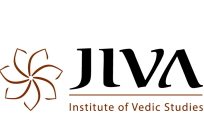The Paniniya-siksa (41-42) describes the importance of the Vedangas as follows:
info@telugu.jiva.org for inquiries about Jiva Institute and guesthouse bookings
For website question please use our contact-form»
380 Sheetal Chaya
Raman Reti, Vrindavan
UP 281121, India
© 2017 JIVA.ORG. All rights reserved.
